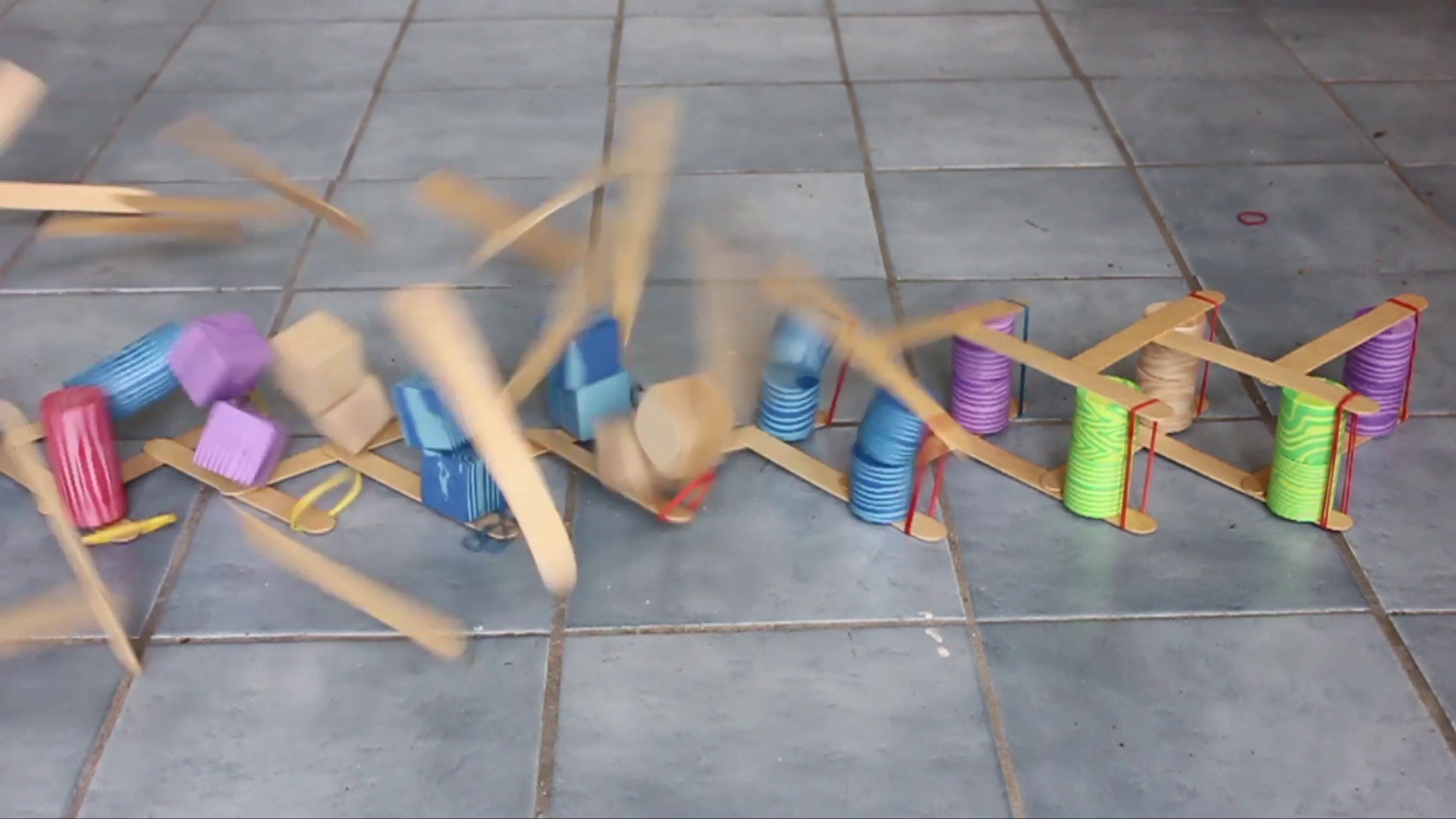Probably the most popular chain reaction weave is the “cobra weave.” It is called the cobra weave because when it is detonated in the right direction, the chain lifts itself up off of the ground like a rearing snake. It is also one of the fastest and easiest weaves to assemble.
To make it, start by placing one stick on the ground at a 45 degree angle. Then place a second stick on top of it so that the sticks are perpendicular and intersect at the top third of each stick. Then place a third stick on top of the second so that they intersect at the bottom third of the two sticks. To lock the left end in place, take a fourth stick and weave it under the top end of the first stick, over the middle of the third stick and under the bottom end of the third.
Now just continue the pattern out on the right side. The next stick should go over the bottom end of third stick and under the first stick. Repeat this process until the chain reaches the desired length. The sticks should all intersect at the ends or the 1/3 point on the stick. To lock down the end of the chain, insert one last sick between the three end pieces. Alternatively, you could just place a heavy object on top of the end pieces. This weave can be easily curved by carefully bending a straight section of the chain. To detonate the chain, simply pull out the last piece that you added. The chain should lift up off the ground and travel like a wave until all the pieces have flown apart.





























